
Their formation and the counties where most of the "Isley" families lived








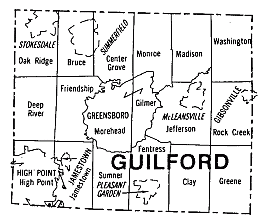
The first court was ordered held at the home of Robert Lindsay and provided for the commissioners to buy the land of John Campbell for the courthouse site. In 1785 Martinsville was laid out as the courthouse. It was named in honor of Alexander Martin, governor of North Carolina, 1782-1785 and 1789-1792. The courthouse had been called Guilford Court House until the passage of this act. Commissioners were named by the act of 1807 to select a place at the center of the county for the erection of a new courthouse, as the old one was badly in need of repair and not conveniently located. Commissioners were also named to purchase 30 acres of land and have the new courthouse erected. They were to sell the old courthouse. In 1808 the new county seat was named Greensborough in honor of Nathaniel Greene. Today Greensboro is the county seat.









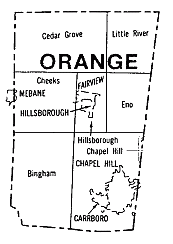
The first courthouse was authorized to be established in 1754 where the western path crossed the Eno River on the land of James Watson. Childsburg was established in 1759 and was changed to Hillsborough in 1766.
Hillsborough, North Carolina was laid out in 1754 by William Churton, where the great Indian Trading Path crossed the Eno River. Then called "Orange," the town was designed on 400 acres granted by the Honorable John Earl Granville. Hillsborough took its present name in 1766.
In 1771, Orange County was greatly reduced in area. The western part of it was combined with the eastern part of Rowan County to form Guilford County. Another part was combined with parts of Cumberland County and Johnston County to form Wake County. The southern part of what remained became Chatham County.
In 1777, the northern half of what was left of Orange County became Caswell County. In 1849, the western third of the still-shrinking county became Alamance County. Finally, in 1881, the eastern half of the county's remaining territory was combined with part of Wake County to form Durham County.



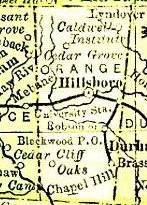





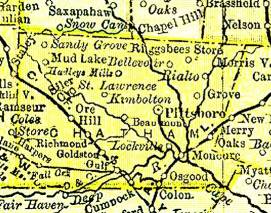
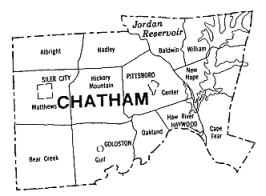


The county seat of Pittsboro was named for William Pitt, the younger, who was the youngest prime minister of Great Britain. He was 24 years of age, at the time.





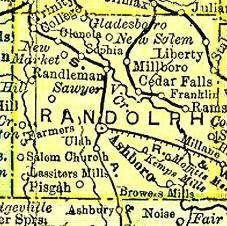
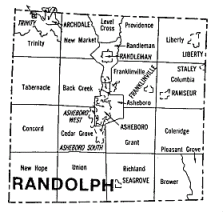


Commissioners were named in 1783 to select a site for the county seat. This act directed that court be held at the home of William Bell until the courthouse was completed.
In 1785 an act was passed removing the court from the house of William Bell and allowing the justices at each court to decide where the next court would meet until the courthouse was completed.
In 1788 a town was established at the courthouse on the land of Thomas Dauggan. This town, was named Johnstonville in honor of Samuel Johnston.
In 1791 an act was passed authorizing the construction of a prison at the courthouse.
In 1792 an act was passed authorizing commissioners to select a site in the center of the county and have a new courthouse erected, as the old courthouse was not in the center of the county.
In 1796 Asheborough was established as the county seat on the land of Jesse Henley.
In 1819 a new courthouse was authorized to be built in Asheborough. Asheboro is the county seat.








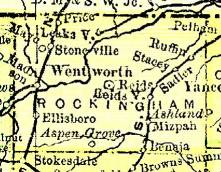



The first court was held at the home of Adam Tate, at which time the justices were to decide on the place for holding future courts until the courthouse could be erected.
In 1787 an act was passed which directed the courthouse to be erected on the land of Charles Mitchell on the east side of Big Rock House Creek.
In 1796 an act was passed authorizing the purchase of land from Robert Galloway & Company, where public buildings were situated, and the community of Wentworth was established.
In 1797 an act was passed suspending operations on the Wentworth courthouse.
In 1798 commissioners were named to establish Wentworth on land given by Robert Galloway for that purpose. The first court was held at Wentworth in May, 1799. Wentworth is the county seat.


